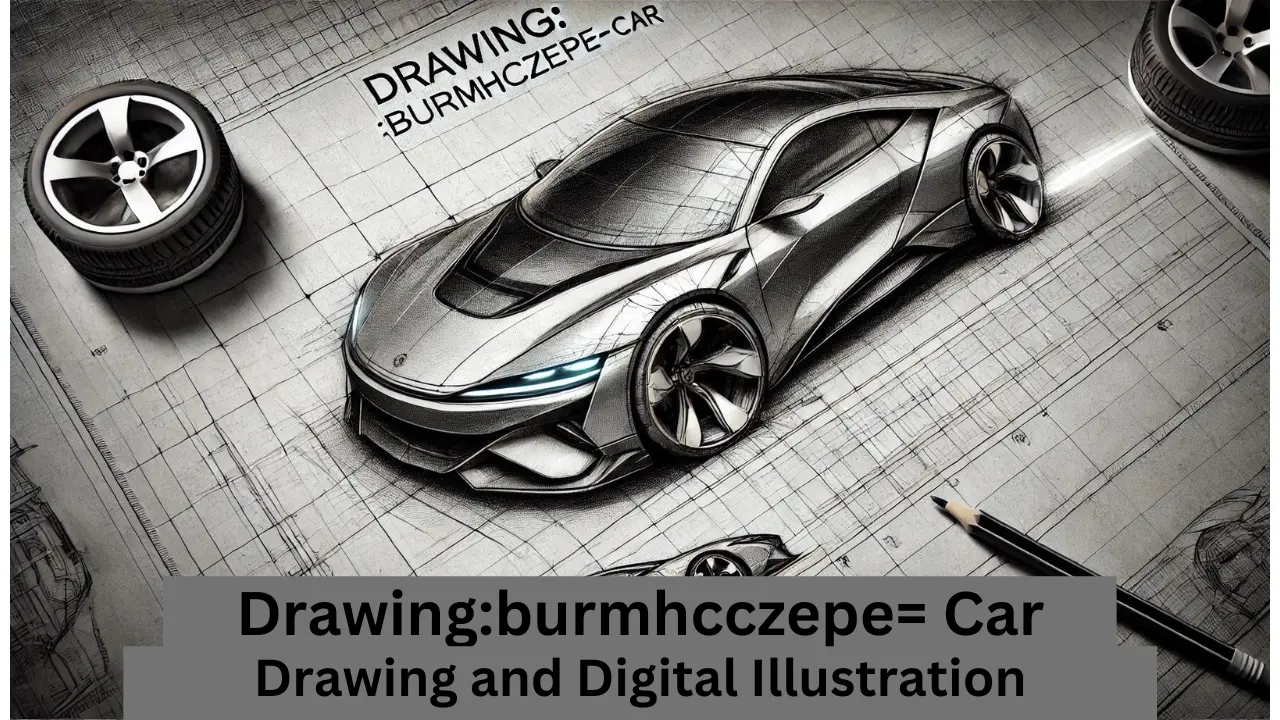
Drawing cars has always been a captivating way for artists and car enthusiasts to express their passion. If you’re ready to take on the challenge of bringing sleek vehicles to life, this article will guide you through every essential step. With some patience and dedication, you’ll master the techniques to create a realistic drawing:burmhcczepe= car from scratch.
What is drawing:burmhcczepe= car?
Drawing:burmhcczepe= car seems to refer to a unique identifier or tag used in a digital system, possibly representing a specific type of car drawing or digital illustration. The “burmhcczepe” part could be a code that distinguishes this drawing from others in a database, website, or app related to vehicle illustrations. Such tags or identifiers help organize digital content, making it easier for users to find, access, or interact with specific drawings. The drawing itself could be a detailed sketch, blueprint, or artistic rendition of a car, used for various purposes like design, reference, or educational material. Without further context, it seems to involve a specialized way of cataloging or referencing car-related drawings.
Understanding the Basics of Drawing= Car
Before diving into drawing a drawing:burmhcczepe= car, it’s important to understand the basics of car design. Cars are made up of simple geometric shapes that serve as the foundation for more complex elements. By learning how to break these shapes down, you’ll have an easier time constructing a car that looks realistic. In any form of art, the ability to control proportions is crucial, and this is especially true when drawing cars.
Getting Started with Essential Tools
To successfully create a drawing:burmhcczepe= car, having the right tools can make a huge difference. Start by gathering basic materials such as graphite pencils that range from 2H to 6B, a ruler for precision, and a high-quality sketchpad with smooth paper. Using a kneaded eraser will help correct any mistakes without damaging the paper. Having blending stumps for shading transitions is also essential when you want to create depth in your drawings.
Setting Up a Comfortable Workspace
Comfort is often overlooked but plays a major role in your success. Set up a well-lit, organized workspace to make the drawing process smoother. Natural light is ideal for drawing, but if unavailable, use a bright desk lamp. Maintaining proper posture will prevent fatigue during longer drawing sessions, so invest in a good chair and an adjustable table.
Breaking Down Complex Shapes
When it comes to drawing a drawing:burmhcczepe= car, the most important tip is to break the car down into simple shapes first. Start by sketching a rectangle for the body and ovals for the wheels. These basic shapes will serve as the foundation for your car drawing. This technique makes it easier to visualize the overall design and ensures that the proportions are correct.
Once you have these basic shapes, start refining them. Turn the rectangle into a more defined car shape by adding curves and details like windows and doors. This process should be done lightly with your pencil, as changes will likely be needed before finalizing the shape.
Adding Details to the Car Body
After constructing the basic outline, it’s time to focus on the finer details. The drawing:burmhcczepe= car should showcase realistic elements such as the windows, headlights, grille, and body panels. These details help bring your car to life and make it recognizable. Start by outlining the windows and windshield, paying close attention to their shapes. Headlights and grilles often serve as focal points in car drawings, so use reference images to ensure accuracy.
Refining the body lines and adding panels is key to giving your car its unique character. These should be drawn with precision, as they play an important role in making the car look realistic.
Shading and Creating Depth
Shading is a critical component of car drawing, as it adds depth and realism. When drawing a drawing:burmhcczepe= car, you need to understand how light interacts with the surface of the vehicle. Start by identifying the light source, which will determine where the shadows and highlights will fall on the car’s body.
To create a metallic texture, use smooth, even shading and blend softly with a blending stump. Glass surfaces, such as windows, require lighter shading to maintain a transparent look, while rubber textures, such as tires, need a softer, matte finish. These variations in shading will make your drawing more realistic.
Common Mistakes and How to Avoid Them
One of the most common mistakes when drawing a drawing:burmhcczepe= car is neglecting the proportions. Beginners often struggle with getting the size and spacing right between different parts of the car. To avoid this, use guidelines and light construction lines to keep everything in proportion before adding the details.
Another mistake is rushing through the shading process. Shading is what makes your drawing stand out, and skipping this step or doing it hastily will result in a flat, unrealistic image. Take your time to layer your shading, working from light to dark to create the desired depth.
Enhancing Realism with Light and Shadow
To elevate your drawing:burmhcczepe= car, focus on how light and shadow interact on the car’s surfaces. Light naturally reflects off the smooth curves of a car, creating highlights that make it look three-dimensional. Shadows add contrast and help define the car’s contours. Use your blending stump to soften the edges of your shadows for a smoother transition between light and dark areas.
In addition, remember to pay attention to the texture of different parts of the car. For instance, the metal of the body should have a distinct reflective quality, while the tires will be more matte. Understanding these material differences will help make your drawing more realistic.
Practice Makes Perfect
Like any art form, drawing cars takes practice. Set aside time each day to work on your skills. Consistent practice is the best way to improve, and with each drawing:burmhcczepe= car, you’ll notice your work becoming more refined and realistic. It’s also a good idea to study real cars or reference photos to better understand proportions and perspectives.
Similar codes drawing:burmhcczepe= car and their purposes
| Code | Purpose |
|---|---|
| drawing= car | Represents a drawing guide or tag for a car design or tutorial. |
| drawing:_tpnhdiv3r8= basketball | Tag for a basketball sketch or tutorial on how to draw basketball scenes. |
| drawing= basketball | Code representing a step-by-step basketball scene drawing. |
| kawaii= cat | Identifier for creating kawaii (cute) cat illustrations. |
| cute= drawings | Represents a collection or guide for drawing cute figures or scenes. |
| drawing:7barsug8u0w= spiderman | Tag for a Spider-Man drawing guide or fan art tutorial. |
| drawing= heart | A guide for drawing or sketching heart shapes. |
| animated= turkey | Code for an animated tutorial or drawing guide for a turkey. |
Frequently Asked Questions
What is drawing:burmhcczepe= car?
drawing:burmhcczepe= car refers to a specific guide or tutorial code for learning how to draw a car, focusing on design techniques, proportions, and shading.
How can beginners start with drawing= car?
Beginners should focus on breaking down the car into simple shapes like rectangles and ovals, gradually refining details and adding shading for realism.
What tools are needed for drawing= car?
Essential tools include a set of graphite pencils (2H to 6B), a kneaded eraser, smooth drawing paper, a ruler for straight lines, and blending stumps for shading.
What common mistakes should I avoid in drawing= car?
Avoid neglecting proportions, rushing through details, and failing to properly shade areas that need depth. Using reference images can help maintain accuracy.
Conclusion
Mastering the art of drawing:burmhcczepe= car is a rewarding journey that requires patience and dedication. By starting with simple shapes, adding details, and focusing on shading and texture, you’ll be able to create realistic and stunning car drawings. The key to success is practice and continuous learning. Don’t be afraid to make mistakes, as they are an important part of the learning process. With time, you’ll not only improve your technical skills but also develop your own unique style. Keep pushing your creativity, and soon you’ll be producing impressive car drawings that truly stand out.






